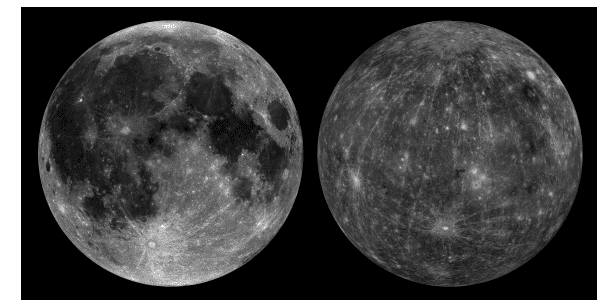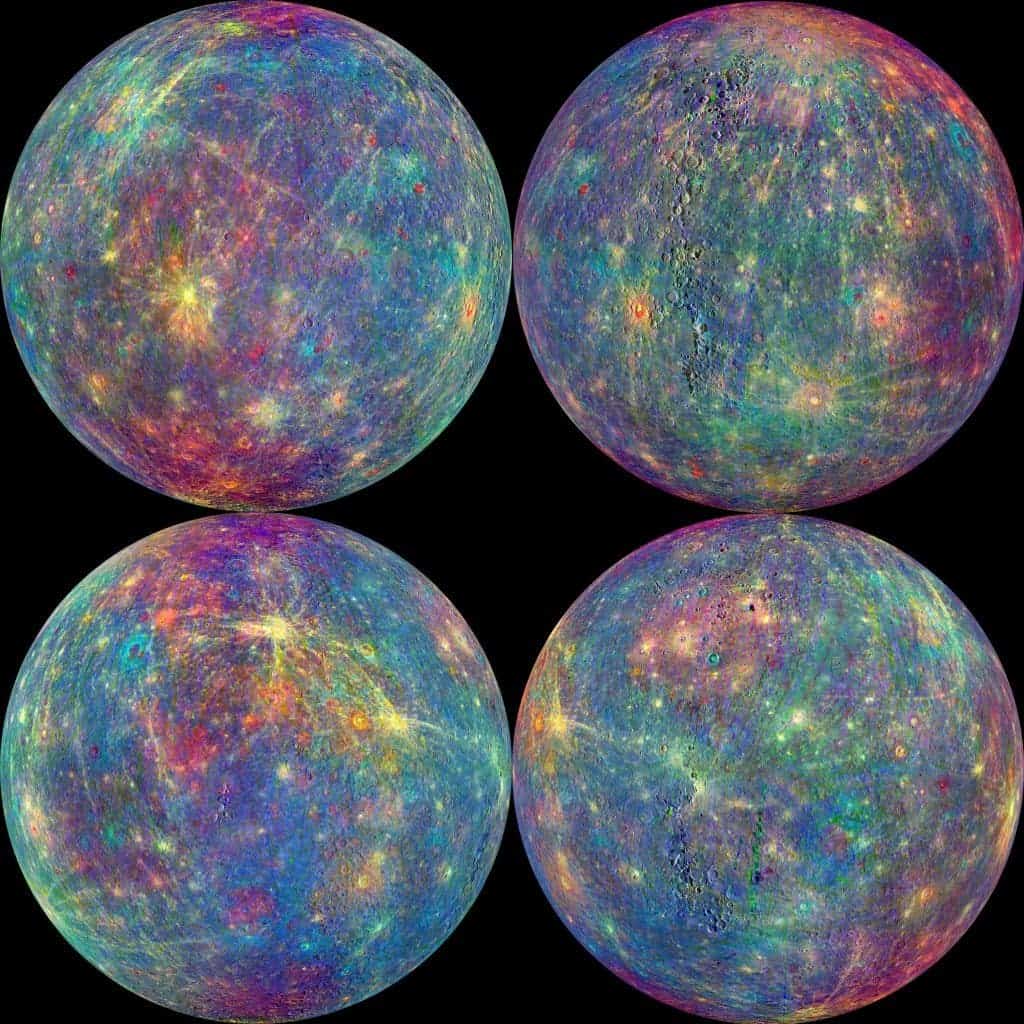When the MESSENGER spacecraft found carbon rich material on Mercury, researchers were surprised and couldn’t quite explain the source. Now, they believe that the material may be the remnants of a primordial graphite crust, which would also explain why Mercury looks darker than expected.
MESSENGER (a backronym of MErcury Surface, Space ENvironment, GEochemistry, and Ranging, and a reference to the Roman mythological messenger, Mercury) orbited the solar system’s most inner planet from 2011 to 2015, becoming the first spacecraft to do so.
Mercury is much darker than the moon. However, iron (thought to be the main darkening agent for atmosphere-less planets) is much more abundant on the moon – so then why is Mercury darker? The proposed theory is that instead, the darkening agent is carbon.

Comparison of relative reflectance of the Moon and Mercury. The lunar
mosaic was assembled from images taken with the 643 nm filter of the Lunar
Reconnaissance Orbiter Camera Wide-Angle Camera. The Mercury mosaic was
assembled from images taken with the 630 nm filter of the Mercury Dual Imaging
System wide-angle camera. Image credits: Peplowski et al, 2016.
This was confirmed by MESSENGER towards the end of its mission. The association of this carbon-rich material with large craters is also consistent with an indigenous origin from deep within the crust and later exposure by impact. In this case, researchers propose a dark, graphite crust on Mercury formed in its primordial days.
Patrick Peplowski, a research scientist at the Johns Hopkins University Applied Physics Laboratory in Laurel, Md, believes this primordial crust was later obscured by volcanism and other intense geological processes; however, some patches of graphite were melted and incorporated into other material, causing a general darkening of the surface.
Previously, some astronomers proposed that the carbon was brought by meteorites crashing into Mercury, but this doesn’t seem to be the case. Mercury is the smallest planet in the Solar System and the one closest to the Sun.










